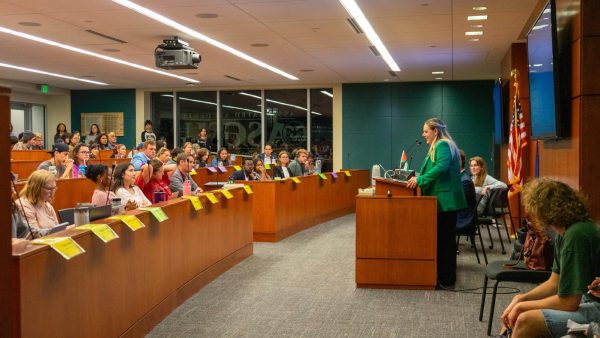Lopez: More can be done in fight for diversity, representation at CSU
Collegian | Falyn Sebastian
March 1, 2022
Editor’s Note: All opinion section content reflects the views of the individual author only and does not represent a stance taken by The Collegian or its editorial board.
College diversity statistics often play an important role in how students decide where they want to spend the next chapter of their life, as well as where they feel the most comfortable.
As a student of color, this is something I searched for when it came to finding a college to attend. Colorado State University doesn’t have a very high racial diversity rate, with only 30% of the University’s population reported as nonwhite; however, I still chose the school, feeling that I had found a place where I belonged.
That was, until I was stereotyped by a professor because of the color of my skin within the first few weeks of being here. I was always surrounded by teachers at my high school who truly saw me for who I was. This moment, however, was one that scared me; one that made me question all the decisions I had made.
“Being seen and heard for who they actually are is the most important aspect in making these students comfortable in the classroom.”
While I knew this professor was one of a slim population who choose to stereotype students based on their race or ethnicity, I realized this is still something a lot of students experience and that it causes them to question their success. Even though a majority of the professors here at CSU actually care for their students and treat them all equally, it can sometimes feel like one rotten apple poisons the orchard.
According to Diverse: Issues in Higher Education, classroom representation matters because “far too often, students of color feel isolated, underrepresented or mistreated, which leads to lower graduation and higher dropout rates.” This demonstrates the importance of students finding meaningful, diverse representation that will make them feel comfortable and seen while attending college. Furthering this, Black and Hispanic students within science, technology, engineering and mathematics fields “leave the discipline at nearly twice the rate of white students.”
There are many stereotypes that affect students of color — sentiments like they aren’t willing to work as hard, they don’t speak perfect English because their accents are too heavy or they are only meant to work in underpaying jobs because they couldn’t handle a college degree. But these simply do not represent reality, as students of color across the country are proving over and over again.
“No matter the reasoning behind a professor questioning a student’s capabilities, it should never be a thing that is openly discussed. More than anything, it shouldn’t be something that is so willingly accepted within society when it comes to students of color.”
These harmful stereotypes continue to overpower the promotion of representation and diversity, making students from diverse backgrounds feel like they have to take up less space as a result. Being seen and heard for who they actually are is the most important aspect in making these students comfortable in the classroom.
According to Inside Higher Ed, “more than two-thirds of students … feel comfortable sharing opinions in their classes,” but this number should be higher. All students should feel comfortable enough, no matter how diverse their setting, to share their opinions.
CSU is attempting to fight classroom stereotyping through the bias reporting system wherein students, staff and faculty can report on issues they see with hope that the issues will be discussed and changed. Yet this is just one step toward creating an environment that is accepting of everyone.
Students of color, despite frequently representing a small number of university populations, are still students and deserve the same opportunities as anyone else. No matter the reasoning behind a professor questioning a student’s capabilities, it should never be a thing that is openly discussed. More than anything, it shouldn’t be something that is so willingly accepted within society when it comes to students of color.
A change needs to be made so professors who choose to view students of color as not being capable enough are no longer part of the norm, and so professor bias isn’t something that overpowers students’ college experiences. These instances create lasting damage that can impact people of color’s desire to continue trying to complete all they set out to achieve in the first place.
One professor shouldn’t have the opportunity to poison the orchard. Success should be accessible for all students in spite of their differences.
Reach Dominique Lopez at letters@collegian.com or on Twitter @caffeinateddee6.








